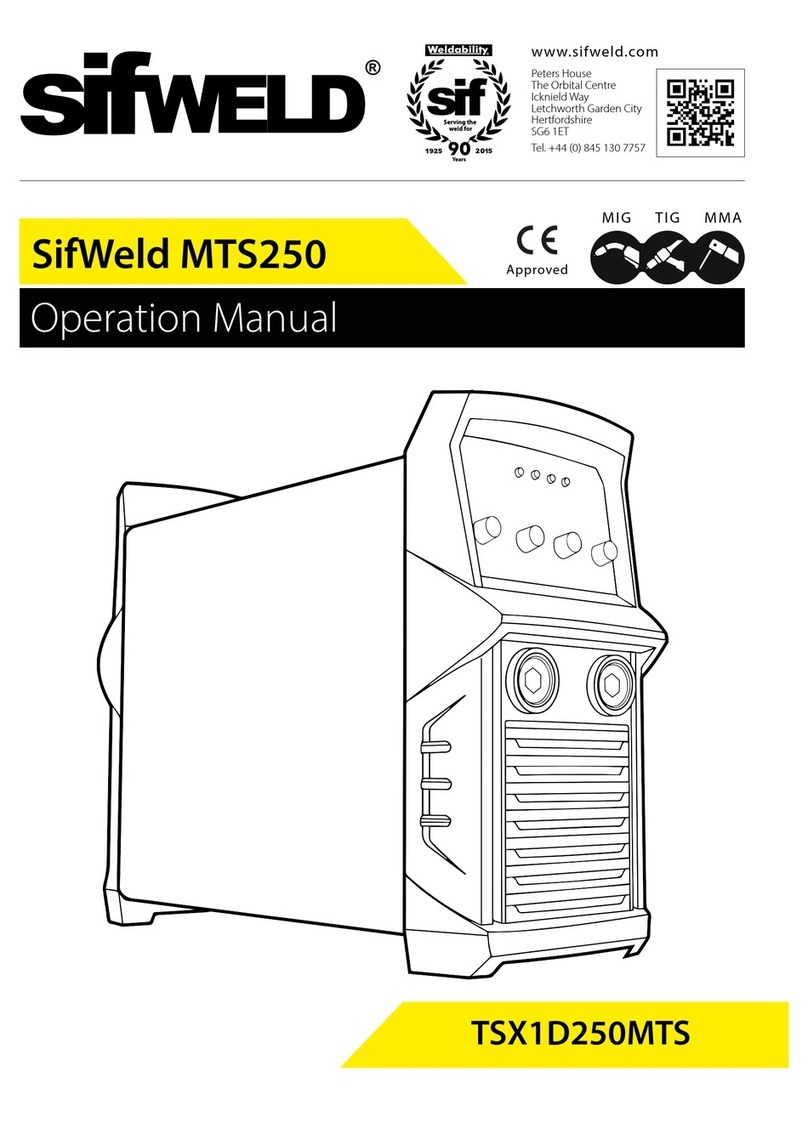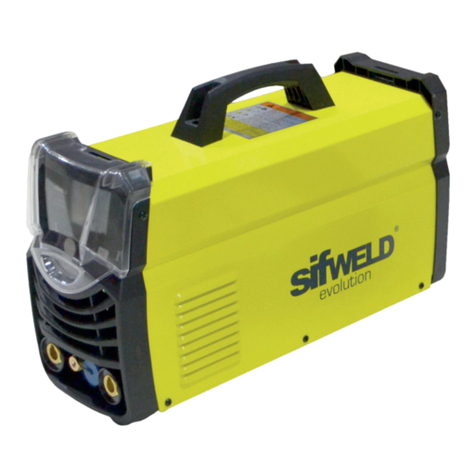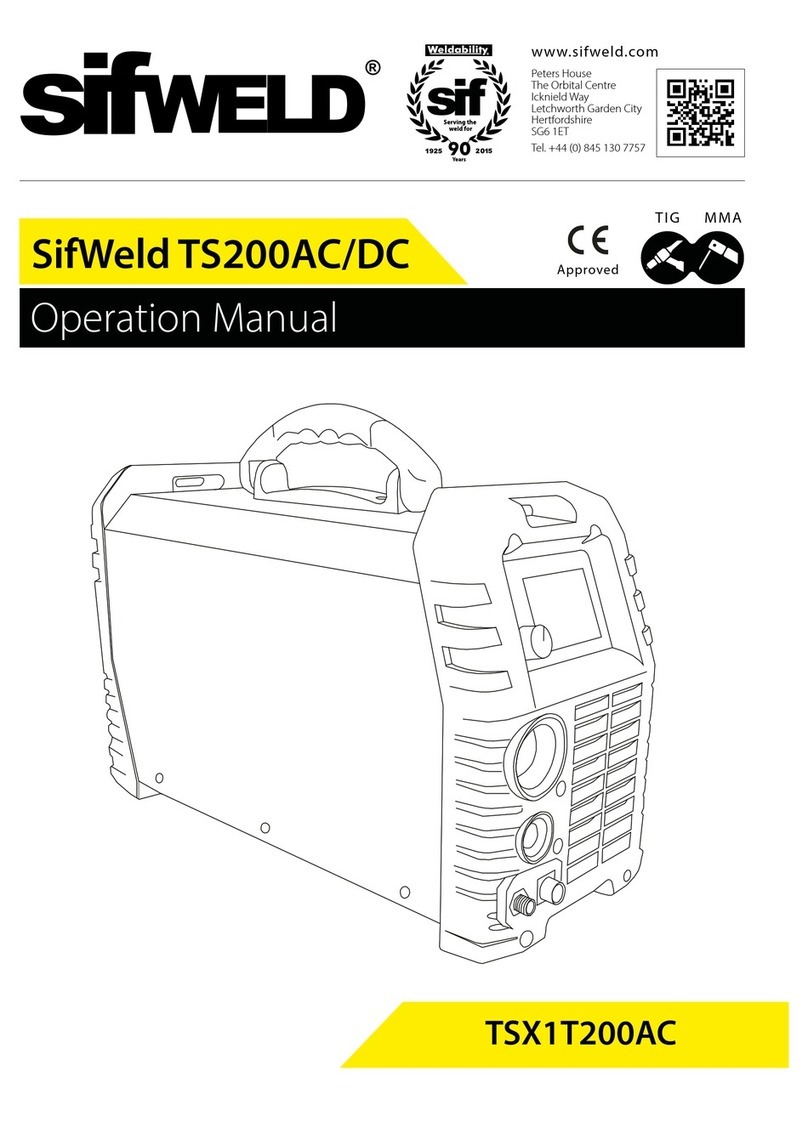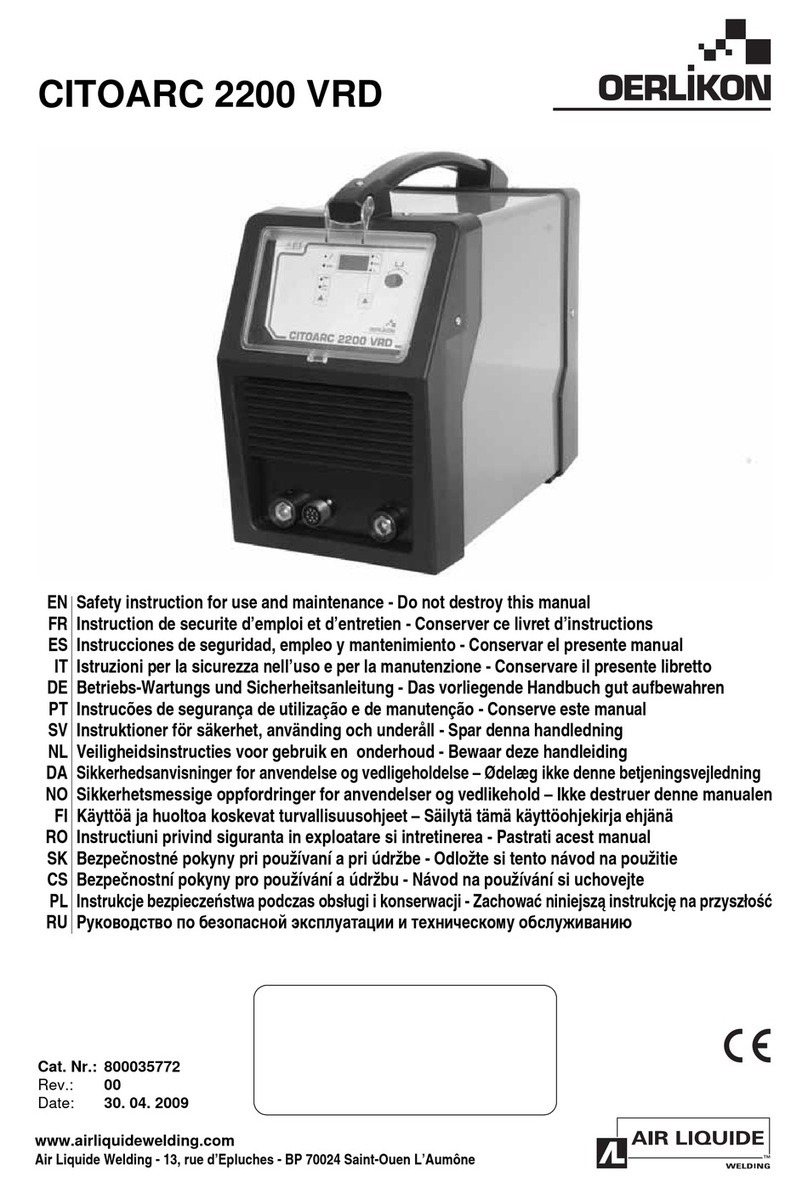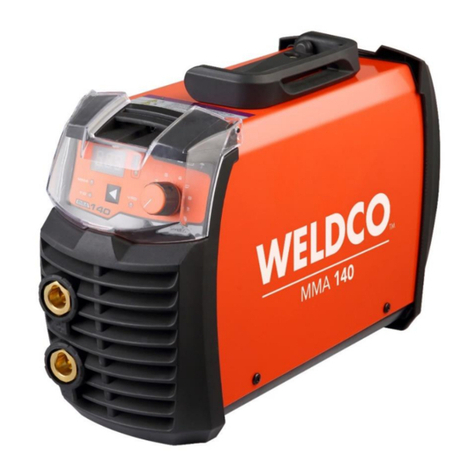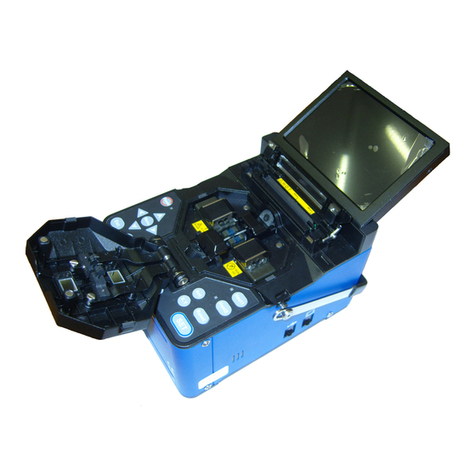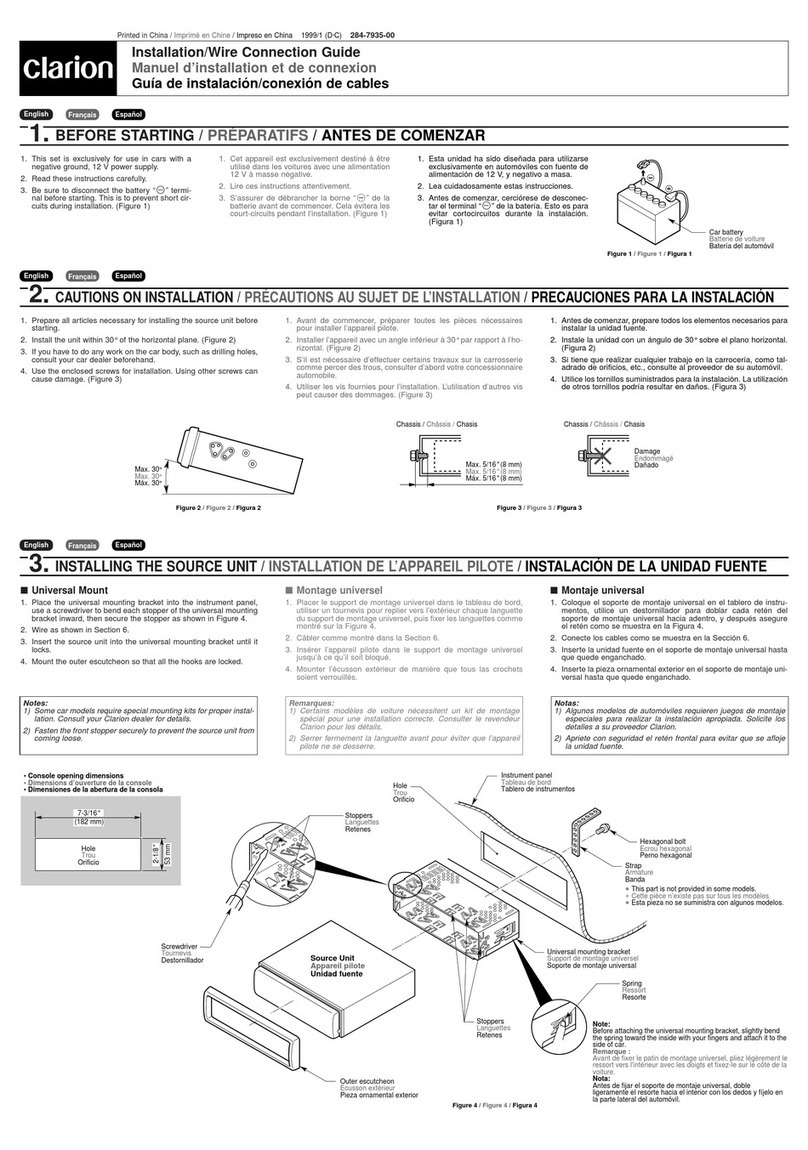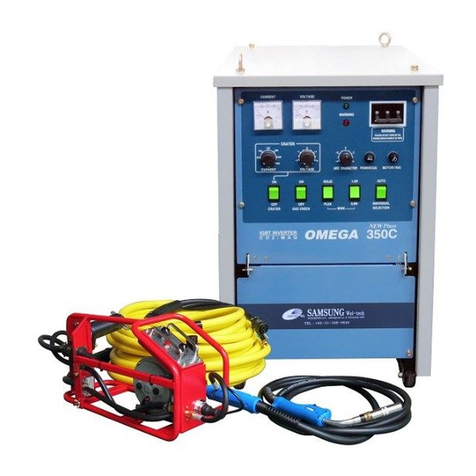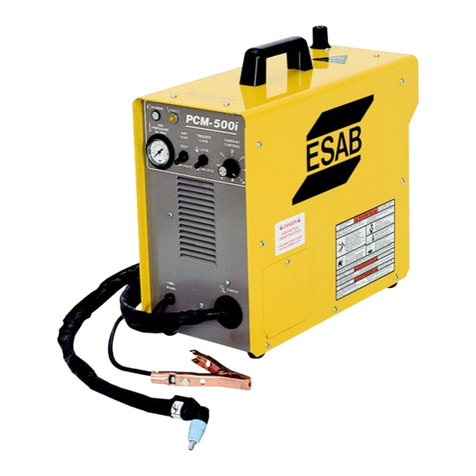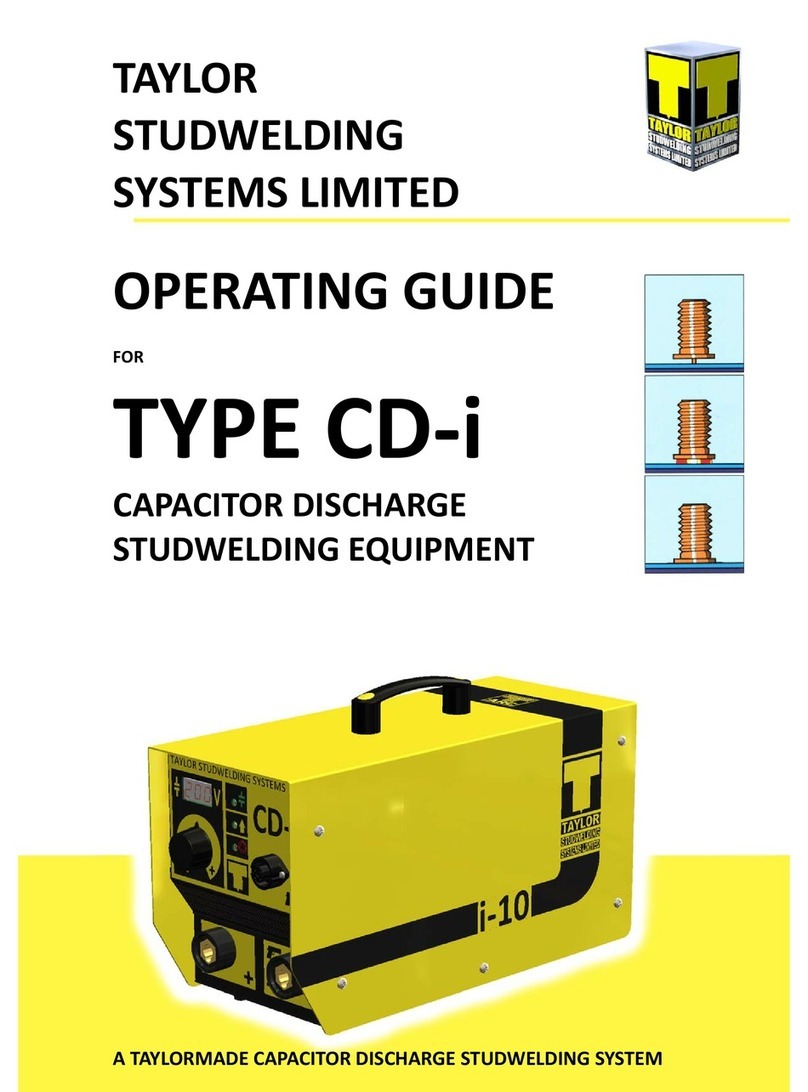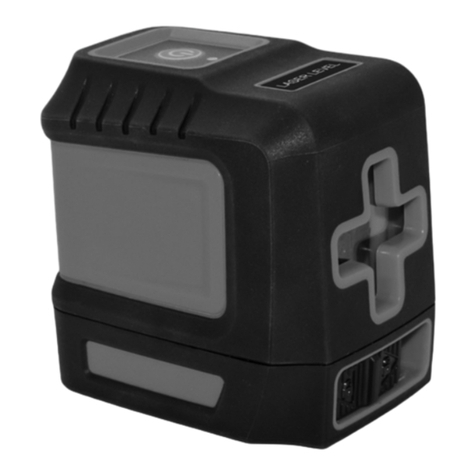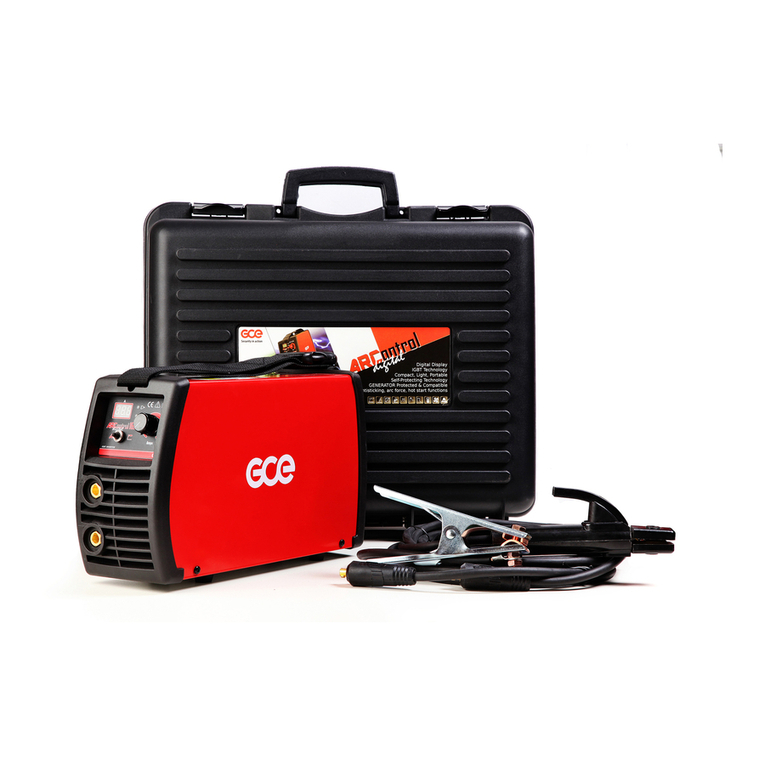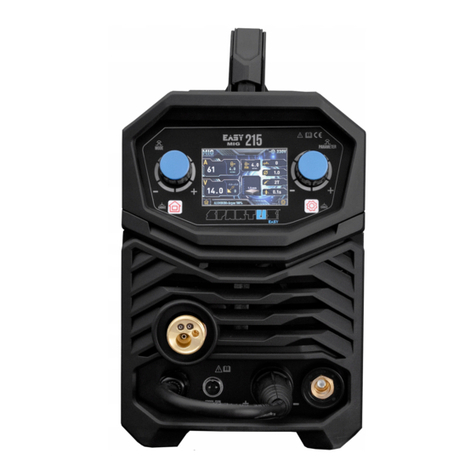SifWeld Evolution MTS500 ROBOT User manual

Operation Manual
www.sifweld.com
Peters House
The Orbital Centre
Icknield Way
Letchworth Garden City
Hertfordshire
SG6 1ET
Tel. +44 (0) 845 130 7757
MIG
Approved
TIG MMA
TSXE3D500RMTS
SifWeld Evolution MTS500 ROBOT

2
DECLARATION OF CONFORMITY
The Low voltage Directive 2006/95/EC of 12 December 2006, entering into force 16 January 2007
The EMC Directive 2004/108/EC, entering into force 20 July 2007
The RoSH Directive 2011/65/EC, entering into force 2 January 2013
Type of Equipment
Welding power source for MIG/MAG, TIG/TAG, MMA welding
Brand name or trade mark
SifWeld® Evolution
Type designation etc.
MTS500 ROBOT
Manufacturer or his authorised representative established within the EEA
Name, address, telephone no, fax no
Weldability Sif
Peters House, The Orbital Centre
Icknield Way, Letchworth
Hertfordshire, SG6 1ET
United Kindom
Phone: +44 (0)845 130 7757 Fax: +44 (0)800 970 7757
The following harmonised standard in force with the EEA has been used in the design:
EN60974-1- Arc welding equipment- Part 1: Welding power sources
EN60974-10 Arc welding equipment - Part 10: Electromagnetic Compatibility (EMC) requirements
Additional information: restrictive use, Class A equipment, intended for use in locations other than residential
By signing this document, the undersigned declares as manufacturer, or the manufacturer’s authorised
representative established within the EEA, that the equipment in question complies with the safety
requirements stated above.
WEEE Directive & Product Disposal
At the end of its serviceable life, this product should not be treated as household
or general waste. It should be handed over to the applicable collection point for
the recycling of electrical and electronic equipment, or returned to the supplier for
disposal.
Place and Date
Letchworth, UK
01-04-2015
Position
Quality Manager
Weldability Sif
Signiture
Keith Mullan

3
Safety Guidelines
These general safety norms cover both arc welding machines and plasma cutting machines unless
otherwise noted. The equipment must only be used for the purpose it was designed for. Using it in any
other way could result in damage or injury and in breach of the safety rules. Only suitably trained and
competent persons should use the equipment. Operators should respect the safety of other persons.
Prevention against electric shock
The equipment should be installed by a qualified person and in accordance with current standards in
operation. It is the user’s responsibility to ensure that the equipment is connected to a suitable power
supply. Consult with your utility supplier if required. If earth grounding of the work piece is required,
ground it directly with a separate cable. Do not use the equipment with the covers removed. Do not
touch live electrical parts or parts which are electrically charged. Turn off all equipment when not in use.
Cables (both primary supply and welding) should be regularly checked for damage and overheating. Do
not use worn, damaged, under sized or poorly jointed cables. Ensure that you wear the correct protec-
tive clothing, gloves, head and eye protection. Insulate yourself from work and ground using dry insulat-
ing mats or covers big enough to prevent any physical contact with the work ground. Never touch the
electrode if you are in contact with the work ground, or another electrode from a different machine.
Do not wrap cables over your body. Ensure that you take additional safety precautions when you are
welding in electrically hazardous conditions such as damp environments, wearing wet clothing, and
metal structures. Try to avoid welding in cramped or restricted positions. Ensure that the equipment is
well maintained. Repair or replace damaged or defective parts immediately. Carry out any regular main-
tenance in accordance with the manufacturer’s instructions.
Safety against fumes and welding gases
Locate the equipment in a well-ventilated position. Keep your head out of the fumes. Do not breathe
the fumes. Ensure the welding zone is in a well-ventilated area. If this is not possible provision should be
made for suitable fume extraction. If ventilation is poor, wear an approved respirator. Read and under-
stand the Material Safety Data Sheets (MSDS’s) and the manufacturer’s instructions for metals, consum-
able, coatings, cleaners, and de-greasers. Do not weld in locations near any de-greasing, cleaning, or
spraying operations. Be aware that heat and rays of the arc can react with vapours to form highly toxic
and irritating gases. Do not weld on coated metals, unless the coating is removed from the weld area,
the area is well ventilated, and while wearing an air-supplied respirator. The coatings on many metals
can give off toxic fumes if welded.
Prevention against burns and radiation
Arc rays from the welding process produce intense, visible and invisible (ultraviolet and infrared) rays
that can burn eyes and skin. Wear an approved welding helmet fitted with a proper shade of filter lens
to protect your face and eyes when welding or watching. Wear approved safety glasses with side shields
under your helmet. Never use broken or faulty welding helmets. Always ensure there are adequate
protective screens or barriers to protect others from flash, glare and sparks from the welding area. Ensure
that there are adequate warnings that welding or cutting is taking place.

4
Wear suitable protective flame resistant clothing. The sparks and spatter from welding, hot work pieces,
and hot equipment can cause fires and burns. Welding on closed containers, such as tanks, drums, or
pipes, can cause them to explode. Accidental contact of electrode to metal objects can cause arcs,
explosion, overheating, or fire. Check and be sure the area is safe and clear of inflammable material
before carrying out any welding.
Protection against noise
Some welding and cutting operations may produce noise. Wear safety ear protection to protect your
hearing.
Protection from moving parts
When the machine is in operation, keep away from moving parts such as motors and fans. Moving
parts, such as the fan, may cut fingers and hands and snag garments. Protections and coverings may
be removed for maintenance and controls only by qualified personnel, after first disconnecting the
power supply cable. Replace the coverings and protections and close all doors when the intervention
is finished, and before starting the equipment. Take care to avoid getting fingers trapped when loading
and feeding wire during set up and operation. When feeding wire be careful to avoid pointing it at other
people or toward your body. Always ensure machine covers and protective devices are in operation.
Precautions against fire and explosion
Avoid causing fires due to sparks and hot waste or molten metal. Ensure that appropriate fire safety
devices are available near the cutting / welding area. Remove all flammable and combustible materials
from the cutting / welding zone and surrounding areas. Do not cut/weld fuel and lubricant containers,
even if empty. These must be carefully cleaned before they can be cut/welded. Always allow the cut/
welded material to cool before touching it or placing it in contact with combustible or flammable
material. Do not work in atmospheres with high concentrations of combustible fumes, flammable gases
and dust. Always check the work area half an hour after cutting to make sure that no fires have begun.
Risks due to magnetic fields
The magnetic fields created by high currents may affect the operation of pacemakers or electronically
controlled medical equipment. Wearers of vital electronic equipment should consult their physician
before beginning any arc welding, cutting, gouging or spot welding operations. Do not go near welding
equipment with any sensitive electronic equipment as the magnetic fields may cause damage.
RF Declaration
Equipment that complies with directive 2004/108/EC concerning electromagnetic compatibility (EMC)
and the technical requirements of EN60974-10 is designed for use in industrial buildings and not those
for domestic use where electricity is provided via the low voltage public distribution system. Difficulties
may arise in assuring class A electromagnetic compatibility for systems installed in domestic locations
due to conducted and radiated emissions. In the case of electromagnetic problems, it is the
responsibility of the user to resolve the situation. It may be necessary to shield the equipment and fit
suitable filters on the mains supply.

5
LF Declaration
Consult the data plate on the equipment for the power supply requirements. Due to the elevated
absorbency of the primary current from the power supply network, high power systems affect the
quality of power provided by the network. Consequently, connection restrictions or maximum
impedance requirements permitted by the network at the public network connection point must be
applied to these systems. In this case the installer or the user is responsible for ensuring the equipment
can be connected, consulting the electricity provider if necessary.
Materials and their disposal
The equipment is manufactured with materials, which do not contain any toxic or poisonous
materials dangerous to the operator. When the equipment is scrapped, it should be dismantled
separating components according to the type of materials. Do not dispose of the equipment with
normal waste. The European Directive 2002/96/EC on Waste Electrical and Electronic Equipment states
the electrical equipment that has reached its end of life must be collected separately and returned to an
environmentally compatible recycling facility.
Handling of Compressed gas cylinders and regulators
All cylinders and pressure regulators used in welding operations should be handled with care.
Never allow the electrode, electrode holder or any other electrically “hot” parts to touch a cylinder.
Keep your head and face away from the cylinder valve outlet when opening the cylinder valve.
Always secure the cylinder safely. Never deface or alter any cylinder.
The following signs and explanations are to remind the user of the potential
risks involved and the dangers of misuse or mistreatment of the welding
machine.
!
RUNNING PARTS MAY BE DANGEROUS!
Keep away from running components,
including the fan.
BE AWARE OF SPARKS AND SPATTER
Wear protective clothing, such as leather
gloves, Flame retardant overalls, boots and
eyewear.
DO NOT TOUCH THERMAL COMPONENTS!
Thermal components may cause severe burns
when in contact with unprotected skin.
ELECTRIC SHOCKS CAN KILL!
Never touch electrical parts. Keep the
equipment in good condition, replace
damaged parts, undertake regular
maintenance according to the instructions.

6
1. Preface 7
1.1 General 7
1.2 Introduction 8
1.3 Technical Specications 9
1.4 Overview of Machine 10
2. Control Panels 16
2.1 MMA Display 16
2.2 MIG Display 17
2.3 MIG Dual Pulse SYN Display 18
2.4 MIG Manual Display 19
2.5 MIG MAG SYN Display 20
3. Installation 21
3.1 Wire Feed Roller 26
3.2 Wire Installation 27
3.3 MIG Torch Liner 29
4. Operation 30
4.1 Spool Gun 31
5. Troubleshooting 33
6. Maintenance 34
7. Warranty 35
Contents

7
1. Preface
Congratulations on choosing your SifWeld Evolution MTS500 ROBOTwelding machine.
Used correctly, SifWeld products can signicantly increase the productivity of your welding, and provide
years of economical service. This operating manual contains important information on the use,
maintenance and safety of your SifWeld product. Please read the manual carefully before using the
equipment for the rst time. For your own safety and that of your working environment, pay particular
attention to the safety instructions in the manual.
For more information on SifWeld products, consult an authorised SifWeld dealer, or visit the SifWeld web
site at www.sifweld.com. The specications presented in this manual are subject to change without prior
notice.
Important notes
Items in the manual that require particular attention in order to minimise damage and personal harm
are indicated with the ’NOTE!’ notation. Read these sections carefully and follow their instructions.
Disclaimer
While every effort has been made to ensure that the information contained in this guide is accurate and
complete, no liability can be accepted for any errors or omissions. We reserve the right to change the
specication of the product described at any time without prior notice. Do not copy, record, reproduce
or transmit the contents of this guide without prior permission.
1.1 General

8
The SifWELD MTS500 Robot is a professional, microprocessor-controlled inverter welding package for
MIG, MMA & Lift-TIG applications. With 100% Duty Cycle at 400A this machine is the ideal work horse for
high production manufacturing in air cooled or water cooled versions. Ideally suited for robotic welding
solutions
The dual pulse function incorporating the built in Synergic facility the machine will automatically give the
optimum welding parameters for the specic material, wire size and shielding gas, including optimum MIG
welding of aluminium.
Featuring IGBT technology and providing a lightweight, multi-process machine, a separate wire feed
system.
Features
• 500A, Three phase MIG welding machine with separate wire feed unit
• Synergic features including Dual Pulse programs for steels, aluminium and Mig brazing
• Full digital or analogue robot interface connections.
• Very high duty cycle, 100% at 400A, 60% at 500A
• Perfect machine for robotic solutions or a manual high production environment.
• Programmable Job Memory
• Supervisor Lockable Parameters
• Full Digital Control with LED display for showing and changing all welding parameters.
• 5Kg Reels or Bulk Drum
• Water Cooled or Air Cooled ready to Weld Packages.
• 5M or 10M Interconnect Cable
1.2 Introduction

9
Duty cycle (40oC)
Welding Voltage (V)
Welding Current (A)
Input Power (KW)
Input Current (A)
14.8~39 20.4~4010.4~30
Frequency (HZ)
1.3 Technical Specications
SifWeldEvolution MTS500 ROBOT
Input Voltage (V)
Diameter (mm)
50/60
41
58.1
Fe: 0.6/0.9/1.0/1.2/1.6
SS: 0.8/0.9/1.0/1.2/1.6
Flux-Cored: 0.6/0.8/0.9/1.0/1.2/1.6
3~400±10%
41.8
92.9
Al: 1.0/1.2/1.6
0.75
MIG TIG
33.1
28.4 28.9
22.9
40~500 10~500
92.8
60% 500A
100% 400A
Protection class
Circuit breaker
Dimensions (mm)
Weight (Kg)
Power Factor
IP21S
D32A
620 x 260 x 430
33.8
10~500
MMA
No-load Voltage (V)

10
1.4 Overview of Machine
Front View
Power Source Front Panel Layout
1. Output cathode
2. Output anode
Rear View
3. Water box connector
4. Robot controlling connector
5. Wire feeder connector
6. Positive output anode
7. Power source input
8. Power switch
PANEL FUNCTIONS & DESCRIPTIONS
6
Panel Functions & Descriptions
Machine Layout Description
Front and rear panel layout of welding machine
1. Output cathode: In MIG mode, this polarity must connect the work piece.
2. Output anode: In MMA mode, this polarity must connect the electrode.
3. Water box connector: To connect water box.
4. Robot controlling connector: Connect to the connector of the robot. ﹡
5. Wire feeder connector: Used to connect to the control cable of wire feeder.
6. Positive output anode: Used to connect to the welding cable of wire feeder.
7. Power source input: To connect power source.
8. Power switch: Turn on power supply and turn off power supply.
* indicates that it is explained in detail below.
Robot controlling connector (4)
1. User need to connect the robot with the power source according to the Devicenet
communication configuration table to start communication. (E52 indicates that the
PANEL FUNCTIONS & DESCRIPTIONS
6
Panel Functions & Descriptions
Machine Layout Description
Front and rear panel layout of welding machine
1. Output cathode: In MIG mode, this polarity must connect the work piece.
2. Output anode: In MMA mode, this polarity must connect the electrode.
3. Water box connector: To connect water box.
4. Robot controlling connector: Connect to the connector of the robot. ﹡
5. Wire feeder connector: Used to connect to the control cable of wire feeder.
6. Positive output anode: Used to connect to the welding cable of wire feeder.
7. Power source input: To connect power source.
8. Power switch: Turn on power supply and turn off power supply.
* indicates that it is explained in detail below.
Robot controlling connector (4)
1. User need to connect the robot with the power source according to the Devicenet
communication configuration table to start communication. (E52 indicates that the

11
PANEL FUNCTIONS & DESCRIPTIONS
6
Front and rear panel layout of water cooling
1. Intake: From here, water or coolant, antifreeze, etc. can be injected into tank.
2. Water outlet for TIG (blue).
3. Water inlet for TIG (red).
4. The water cooler control connector.
5. Water outlet for MIG (blue).
6. Water inlet for MIG (red).
Wire feeder
1. MIG gun connector.
2. 9 core Gas Socket for Spool gun.
3. Water outlet.
4. Water inlet.
5. Gas connector.
6. Control anode.
7. Positive output anode.
8. Water inlet.
Water outlet.
9. Wire reel Shaft.
10. Wire Feed Motor.
11. Wire feed tension adjustment (2x).
12. Wire feed tension arm (2x).
13. Wire feeder inlet guide.
14. Wire drive roller (2x).
Front View
Water Cooler Front Panel Layout
1. Intake
2. Water outlet for TIG (blue).
3. Backwater inlet for TIG (red).
Rear View
4. The water cooling control connector.
5. Water outlet for MIG (blue).
6. Backwater inlet for MIG (red).
PANEL FUNCTIONS & DESCRIPTIONS
6
Front and rear panel layout of water cooling
1. Intake: From here, water or coolant, antifreeze, etc. can be injected into tank.
2. Water outlet for TIG (blue).
3. Water inlet for TIG (red).
4. The water cooler control connector.
5. Water outlet for MIG (blue).
6. Water inlet for MIG (red).
Wire feeder
1. MIG gun connector.
2. 9 core Gas Socket for Spool gun.
3. Water outlet.
4. Water inlet.
5. Gas connector.
6. Control anode.
7. Positive output anode.
8. Water inlet.
Water outlet.
9. Wire reel Shaft.
10. Wire Feed Motor.
11. Wire feed tension adjustment (2x).
12. Wire feed tension arm (2x).
13. Wire feeder inlet guide.
14. Wire drive roller (2x).
PANEL FUNCTIONS & DESCRIPTIONS
6
Front and rear panel layout of water cooling
1. Intake: From here, water or coolant, antifreeze, etc. can be injected into tank.
2. Water outlet for TIG (blue).
3. Water inlet for TIG (red).
4. The water cooler control connector.
5. Water outlet for MIG (blue).
6. Water inlet for MIG (red).
Wire feeder
1. MIG gun connector.
2. 9 core Gas Socket for Spool gun.
3. Water outlet.
4. Water inlet.
5. Gas connector.
6. Control anode.
7. Positive output anode.
8. Water inlet.
Water outlet.
9. Wire reel Shaft.
10. Wire Feed Motor.
11. Wire feed tension adjustment (2x).
12. Wire feed tension arm (2x).
13. Wire feeder inlet guide.
14. Wire drive roller (2x).
Wire Feeder
1. MIG gun connector.
2. Nine core air sock for Spool gun.
3. Water outlet.
4. Backwater inlet.
5. Gas connector.
6. Control anode.
7. Positive output anode.
8. Water inlet.
9. Backwater outlet.
10. Wire reel Shaft.
11. Wire Feed Motor.
12. Wire feed tension adjustment (2x).
13. Wire feed tension arm (2x).
14. Wire feeder inlet guide.
15. Wire drive roller (2x).

12
PANEL FUNCTIONS & DESCRIPTIONS
9
Front Panel Functions and Descriptions
Front Panel Functions of welder
1. Indicated LED: Rotate to “ON”, power on; rotate to “OFF”, power off.
2. Voltage display: Display voltage or other parameters.
3. Current display: Display current or other parameters.
4. Function key. *
5. JOB button. *
6. Program save/delete button. *
7. Manual gas check button.
8. Cooling mode key: Press it to select air cooling or water cooling.
9. Welding process select key. *
10. Trigger mode select key: Select 2T/4T/S4T/Spot Weld. *
11. Manual wire feed button.
12. Synergic-material Function.
13. Synergic-diameter Function.
14. Current adjust knob: Press down it to select parameters, rotate it to adjust current
or parameters.
15. Voltage adjust knob: Press down it to select parameters, rotate it to adjust voltage
or parameters.
* Denotes more detailed explanation of function to follow.
Front Panel Functions
1. Indicated LED: Rotate to “ON”, power on; rotate to“OFF”, power off.
2. Voltage display: Display voltage or other parameters.
3. Current display: Display current or other parameters.
4. Function key.
5. JOB button.
6. Program save/delete button.
7. Manual gas check button.
8. Cooling mode key: Press it to select air cooling or water cooling.
9. Welding process select key.
10. Trigger mode select key: Select 2T/4T/S4T/Spot Weld. *
11. Manual wire feed button.
12. Synergic-material Function.
13. Synergic-diameter Function.
14. Current adjust knob: Press down it to select parameters, rotate it to adjust current or parameters.
15. Voltage adjust knob: Press down it to select parameters, rotate it to adjust voltage or parameters.

13
Further Functions Explained
Function key (4)
Implicit parameter menu and parameter adjustment method for import and export
a) Press the function button (18) indicator light “ON” indicates in parameter adjusting mode.
b) Scroll through parameter codes turning knob (14). Codes are shown on meter (3). Once parameter is
selected, adjust the knob (15) with selection shown on the meter (8).
c) Press the function button (18) again, light “OFF” signals exit parameter adjusting mode.
JOB program (5) (6)
In the JOB mode, 100 different JOB records can be stored and recalled. When leaving the factory, has no
saved JOB programs; therefore, operator must rst save a program.
Save/Delete the JOB program
• Set JOB mode parameters (welding function, welding mode, welding parameters, etc).
• Press the JOB button (16) and LED will illuminate.
• Select JOB number by the adjustment Knob (15) shown on the digital meter (8).
• Press the Save/Delete button (17) to save the JOB under the selected number.
Recall the JOB program
• Press the JOB button (16) and the JOB LED will illuminate.
• Select the required JOB number by the adjustment Knob (15) as shown on the meter (8).
• Press the JOB button (16) again and the JOB LED is off that signals exit of JOB mode.
DI SP LAY FUNCTION ADJUSTABLE RANGE MODE
PrG
PRE GAS
0~5S
PoG
POST GAS
0~10S
SFt
SLOW FEED TIME
0~10
bub
BURN BACK
0~10
SPt SPOT WELD TIME 0.5~10S
dPC DELTA PULSE CURRENT 20~200A
DUAL PULSE
FdP DUAL PULSE FREQUENCY 0.5~3.0Hz
dut DUAL PULSE DUTY 10~90%
bAL DUAL PULSE BASE CURRENT ARC
LENGTH +10/ -10
SCP START CURRENT PERCENT 10~200%
S4T
SAL START CURRENT ARC LENGTH +10/ -10
ECP END CURRENT PERCENT 10~200%
EAL END CURRENT ARC LENGTH +10/ -10
HdC HYDROCOOLING ON/OFF
SPG SPOOL GUN ON/OFF
Error Type Error code Description
Thermal relay
E01 Over-heating (1st thermal relay)
E02
Over-heating (2nd thermal relay)
E09
Over-heating (Program in default)
Welding machine E10 Phase loss
E11 No water
Communication E40
Connection problem between wire feeder and power
source
E41 Communication error
Communication
Robot MIG
E51
Communication cord is not connected
E52
Communication cord has problem in connection
E55 Data transaction is interrupted
HSt HOT START 0~10 MMA
ACF ARC FORCE 0~10
dSL DOWN SLOPE 0~10S TIG

14
Welding process select key (9)
Synergic Function
The operator simply sets the welding current like MMA or TIG welding and the machine calculates the
optimal voltage and wire speed for the material type, wire type and size and shielding gas being used.
Obviously other variables such as welding joint type and thickness, air temperature affect the optimal
voltage and wire feed setting, so the program provides a voltage ne tuning function for the synergic
program selected. Once the voltage is adjusted in a synergic program, it will stay xed at this variation
when the current setting is changed. To reset the voltage for a synergic program back to factory default,
change to another program and back again.
The synergic programs are given a number from 1-17, this is accessed on the L display (3) using the
L knob (14), indicator ‘P’. To select the relevant program for the welding application, check the chart
printed on the inside door of the welding machine or further on in this manual.
Single Pulse Function
Pulse allows the arc to enter spray transfer at lower currents and feed speeds than manual allowing
faster welding with high deposition and smaller heat effected zones due to the extra arc energy
provided at peak of pulse. Used for stainless or aluminum edge or seam welds.
Double-Pulse Function
Double pulse allows more precise control of heat input as “peak” is offset by “base”allowing puddle
stability. It is mainly used in aluminum alloy welding for strong penetration with narrow bead and
smooth surface. It can produce the ripple effect of a TIG weld without torch modulation. Dual pulse
reference waveform as shown below:
PANEL FUNCTIONS & DESCRIPTIONS
12
DUAL PULSE FREQUENCY
Set pulse frequency, as shown in Figure regulating the value of time T, namely, ripple
pattern of density regulation. Higher Hz produces many short ripples with slightly lower
penetration.
DUAL PULSE DUTY
Set strong pulse time T1 (peak) for penetration and low-frequency cycle T2 ratio
(cooling), namely the regulation of the proportion of the ripple pattern on weld puddle
surface and resulting depth in groove.
Synergic Function (12) (13)
This makes the setup of MIG welding more simple, the operator simply sets the welding
current like MMA and the machine calculates the optimal voltage and wire speed for the
material type, wire type and size and shielding gas being used. Obviously other variables
such as welding joint type and thickness, air temperature affect the optimal voltage and
wire feed setting, so the program provides a voltage fine tuning function for the synergic
program selected. Once the voltage is adjusted in a synergic program, it will stay fixed at
this variation when the current setting is changed. To reset the voltage for a synergic
program back to factory default, change to another program and back again.
The synergic programs are adjusted by using key (9) and (12) (14). To select the
relevant program for the welding application, check the chart printed on the inside door
of the wire feeder or further on in this manual.
Wire Feed
Current

15
DUAL PULSE FREQUENCY
Set pulse frequency, as shown in Figure regulating the value of time T, namely, ripple pattern of density
regulation. Higher Hz produces many short ripples with slightly lower penetration.
DUAL PULSE DUTY
Set strong pulse time T1 (peak) for penetration and low-frequency cycle T2 ratio (cooling), namely the
regulation of the proportion of the ripple pattern on weld puddle surface and resulting depth in groove.
Synergic Function (12) (13)
This makes the setup of MIG welding more simple, the operator simply sets the welding current like
MMA and the machine calculates the optimal voltage and wire speed for the material type, wire
type and size and shielding gas being used. Obviously other variables such as welding joint type and
thickness, air temperature affect the optimal voltage and wire feed setting, so the program provides
a voltage ne tuning function for the synergic program selected. Once the voltage is adjusted in a
synergic program, it will stay xed at this variation when the current setting is changed. To reset the
voltage for a synergic program back to factory default, change to another program and back again.
The synergic programs are adjusted by using key (9) and (12) (14). To select the relevant program for the
welding application, check the chart printed on the inside door of the wire feeder or further on in this
manual.

16
2. Control Panels
PANEL FUNCTIONS & DESCRIPTIONS
13
MMA Function - Front Panel Description
1. Hot Start/Arc Force parameter code
display
2. Welding Current /Arc Force /Hot Start
Display
3. Welding current LED
4. MMA Function Select
5. Hot Start/Arc Force parameter select
6. Hot Start/Arc Force parameter code
select
7. Welding Current /Arc Force /Hot Start Set
§MIG Function - Front Panel Description
MIG-MAG Pulse SYN Function
1. Synergic programs select
2. Voltage/ Arc length/ Inductance
Set
3. Material thickness /Current/ Wire
Speed Set
4. MIG-MAG Pulse SYN Function
Select
5. Manual Wire Select
6. 2T/ 4T/ S4T/ Spot Weld Select
7. Water/Air Cooling Mode Select
8. Function Select
9. Air Check Select
10. Current/ Wire Speed / Material Thickness Display
11. Programs Numbers/ Voltage/ Arc length/ Inductance Display
1. Hot Start/Arc Force parameter code display
2. Welding Current /Arc Force /Hot Start Display
3. Welding current LED
4. MMA Function Select
5. Hot Start/Arc Force parameter select
6. Hot Start/Arc Force parameter code select
7. Welding Current /Arc Force /Hot Start Set
2.1 MMA Display

17
2.2 MIG Display
MIG-MAG Pulse SYN Function
1. Synergic programs select
2. Voltage/ Arc length/ Inductance Set
3. Material thickness /Current/ Wire Speed Set
4. MIG-MAG Pulse SYN Function Select
5. Manual Wire Select
6. 2T/ 4T/ S4T/ Spot Weld Select
7. Water/Air Cooling Mode Select
8. Function Select
9. Air Check Select
10. Current/ Wire Speed / Material Thickness Display
11. Programs Numbers/ Voltage/ Arc length/ Inductance Display
PANEL FUNCTIONS & DESCRIPTIONS
13
MMA Function - Front Panel Description
1. Hot Start/Arc Force parameter code
display
2. Welding Current /Arc Force /Hot Start
Display
3. Welding current LED
4. MMA Function Select
5. Hot Start/Arc Force parameter select
6. Hot Start/Arc Force parameter code
select
7. Welding Current /Arc Force /Hot Start Set
§MIG Function - Front Panel Description
MIG-MAG Pulse SYN Function
1. Synergic programs select
2. Voltage/ Arc length/ Inductance
Set
3. Material thickness /Current/ Wire
Speed Set
4. MIG-MAG Pulse SYN Function
Select
5. Manual Wire Select
6. 2T/ 4T/ S4T/ Spot Weld Select
7. Water/Air Cooling Mode Select
8. Function Select
9. Air Check Select
10. Current/ Wire Speed / Material Thickness Display
11. Programs Numbers/ Voltage/ Arc length/ Inductance Display

18
2.3 MIG Dual Pulse SYN Display
PANEL FUNCTIONS & DESCRIPTIONS
14
MIG-MAG Dual Pulse SYN Function
1. Synergic programs select
2. Voltage/ Arc length/ Inductance
Set
3. Material thickness /Current/
Wire Speed Set
4. MIG-MAG Dual Pulse SYN
Function Select
5. Manual Wire Select
6. 2T/ 4T/ S4T/ Spot Weld Select
7. Water/Air Cooling Mode Select
8. Function Select
9. Air Check Select
10. Current/ Wire Speed / Material Thickness Display
11. Programs Numbers/ Voltage/ Arc length/ Inductance Display
MIG-MAG Manual Function
1. Voltage/ Inductance Set
2. Material thickness /Current/ Wire Speed Set
3. MIG-MAG Manual Function
Select
4. Manual Wire Select
5. 2T/4T /Spot Weld Select
6. Water/Air Cooling Mode Select
7. Function Select
8. Air Check Select
9. Material thickness /Current/
Wire Speed Display
10. Voltage/ Inductance Display
1. Synergic programs select
2. Voltage/ Arc length/ Inductance Set
3. Material thickness /Current/ Wire Speed Set
4. MIG-MAG Dual Pulse SYN Function Select
5. Manual Wire Select
6. 2T/ 4T/ S4T/ Spot Weld Select
7. Water/Air Cooling Mode Select
8. Function Select
9. Air Check Select
10. Current/ Wire Speed / Material Thickness Display
11. Programs Numbers/ Voltage/ Arc length/ Inductance Display

19
PANEL FUNCTIONS & DESCRIPTIONS
14
MIG-MAG Dual Pulse SYN Function
1. Synergic programs select
2. Voltage/ Arc length/ Inductance
Set
3. Material thickness /Current/
Wire Speed Set
4. MIG-MAG Dual Pulse SYN
Function Select
5. Manual Wire Select
6. 2T/ 4T/ S4T/ Spot Weld Select
7. Water/Air Cooling Mode Select
8. Function Select
9. Air Check Select
10. Current/ Wire Speed / Material Thickness Display
11. Programs Numbers/ Voltage/ Arc length/ Inductance Display
MIG-MAG Manual Function
1. Voltage/ Inductance Set
2. Material thickness /Current/ Wire Speed Set
3. MIG-MAG Manual Function
Select
4. Manual Wire Select
5. 2T/4T /Spot Weld Select
6. Water/Air Cooling Mode Select
7. Function Select
8. Air Check Select
9. Material thickness /Current/
Wire Speed Display
10. Voltage/ Inductance Display
1. Voltage/ Inductance Set
2. Material thickness /Current/ Wire Speed Set
3. MIG-MAG Manual Function Select
4. Manual Wire Select
5. 2T/4T /Spot Weld Select
6. Water/Air Cooling Mode Select
7. Function Select
8. Air Check Select
9. Material thickness /Current/ Wire Speed Display
10. Voltage/ Inductance Display
2.4 MIG Manual Display

20
2.5 MIG SYN Display
1. Synergic programs select
2. Voltage/ Inductance Set
3. Material thickness /Current/ Wire Speed Set
4. MIG-MAG SYN Function Select
5. Manual Wire Select
6. 2T/4T /S4T/Spot Weld Select
7. Water/Air Cooling Mode Select
8. Function Select
9. Air Check Select
10. Material thickness /Current/ Wire Speed Display
11. Programs Numbers /Voltage/ Inductance Display
PANEL FUNCTIONS & DESCRIPTIONS
15
MIG-MAG SYN Function
1. Synergic programs select
2. Voltage/ Inductance Set
3. Material thickness /Current/ Wire
Speed Set
4. MIG-MAG SYN Function Select
5. Manual Wire Select
6. 2T/4T /S4T/Spot Weld Select
7. Water/Air Cooling Mode Select
8. Function Select
9. Air Check Select
10.Material thickness /Current/ Wire Speed Display
11.Programs Numbers /Voltage/ Inductance Display
This manual suits for next models
1
Table of contents
Other SifWeld Welding System manuals

SifWeld
SifWeld MTS 200 User manual
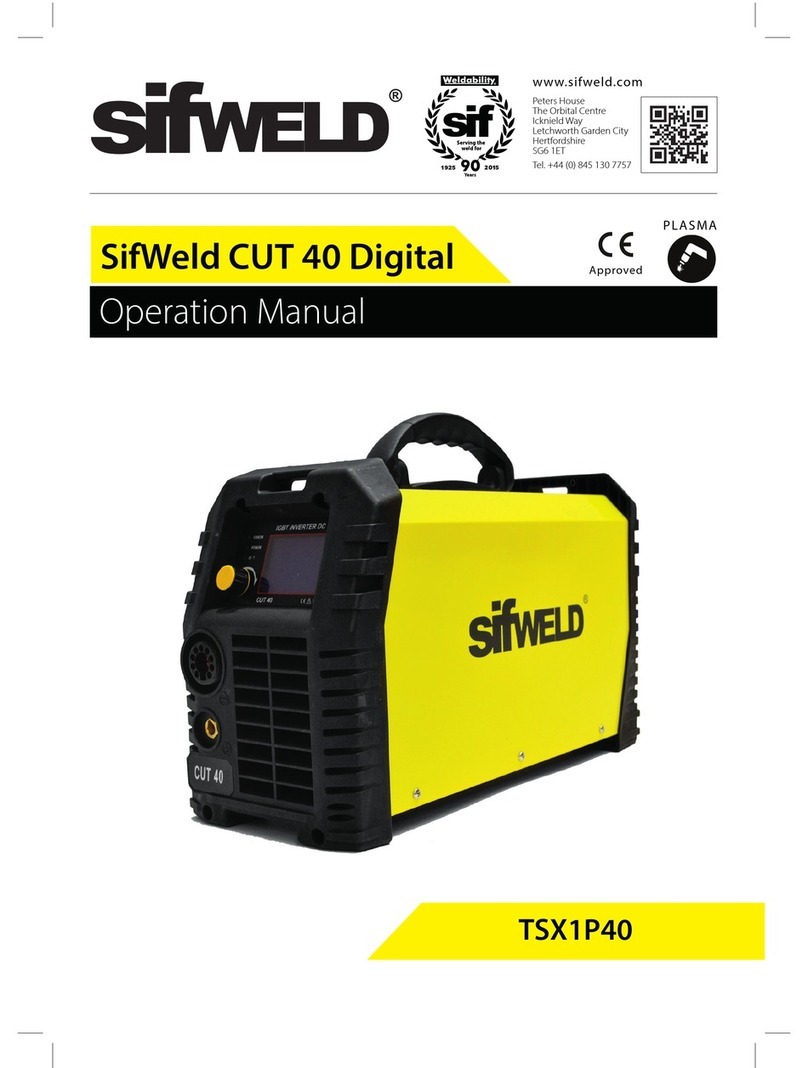
SifWeld
SifWeld CUT 40 Digital User manual

SifWeld
SifWeld Evolution CUT40 Air User manual
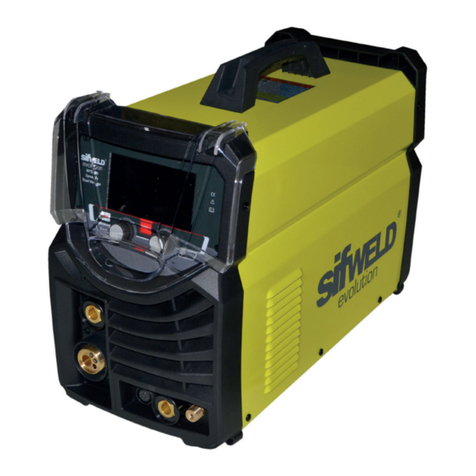
SifWeld
SifWeld Evolution MTS200 SYN User manual
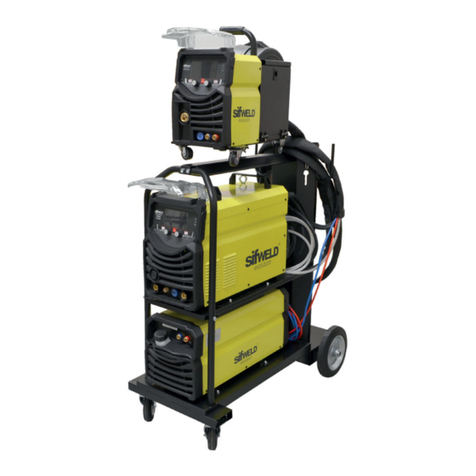
SifWeld
SifWeld Evolution MTS500 DP User manual

SifWeld
SifWeld TSX1D300MTS User manual
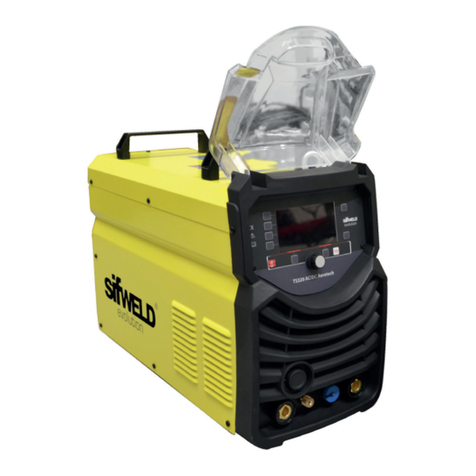
SifWeld
SifWeld Evolution TS320ACDC User manual
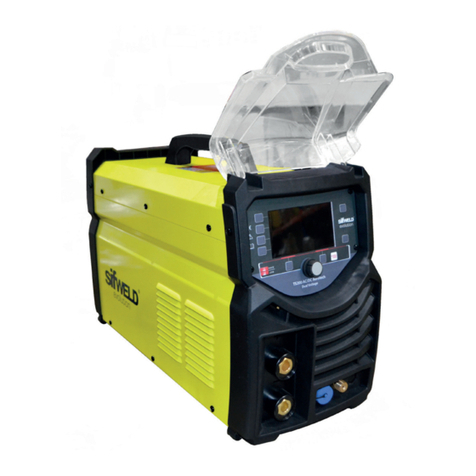
SifWeld
SifWeld Evolution Aerotech TS200ACDC User manual
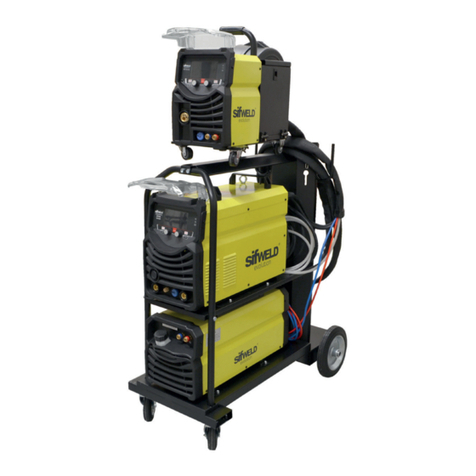
SifWeld
SifWeld Evolution MTS400 SYN User manual
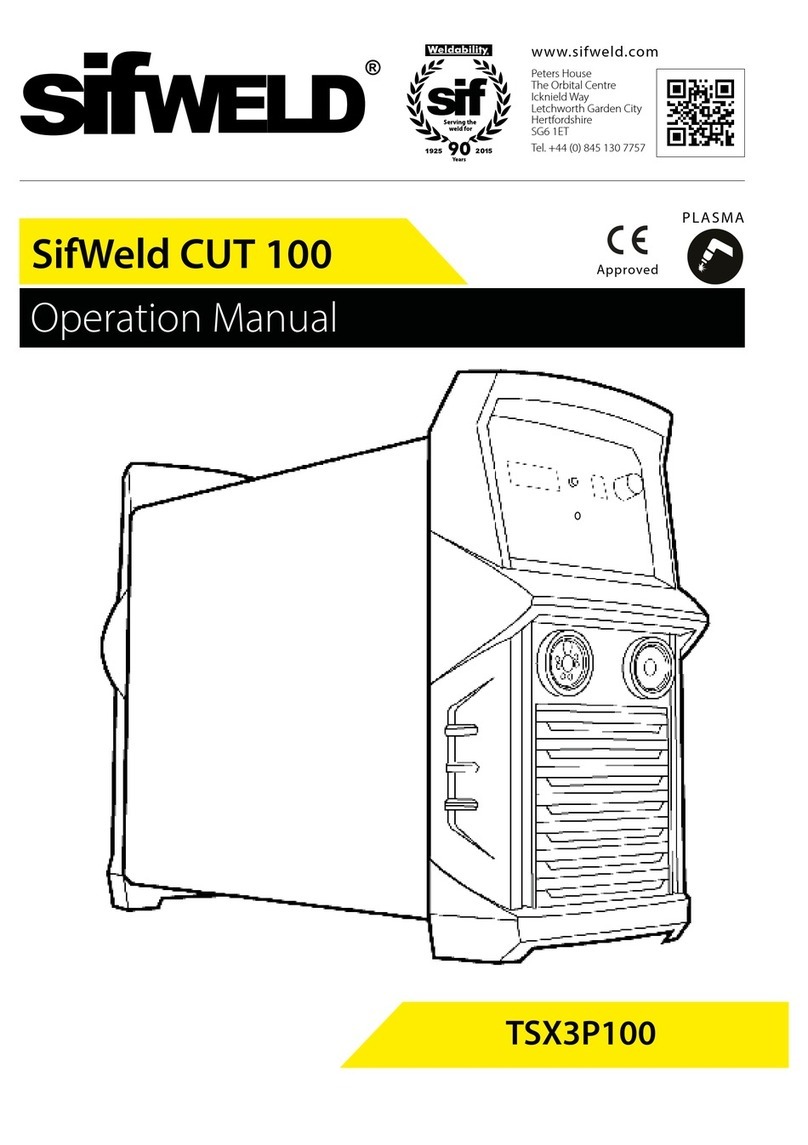
SifWeld
SifWeld CUT 100 Installation manual
